Signs of faulty injectors may be:
- – difficult engine starting;
- – unstable engine operation;
- – engine stalls at idle;
- – increased crankshaft speed at idle;
- – engine does not develop full power, insufficient engine responsiveness;
- – jerks and dips in engine operation when the car is moving;
- – increased fuel consumption;
- – increased CO and HC content in exhaust gases;
- – preignition due to leaky injectors.
You will need the same tools as for removal fuel rail.
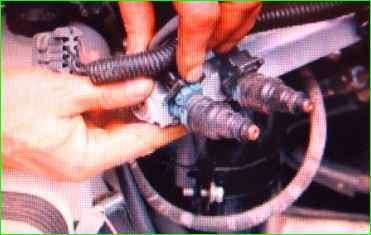
Remove the fuel rail (see "Replacing the Niva Chevrolet Rail") and reconnect the fuel lines to it.
Press the spring clips to disconnect the pads with wires from the injectors.

To remove the injector, squeeze the spring clip of the wire block and disconnect it from the injector.
Using a screwdriver, move the injector clip along the ramp.
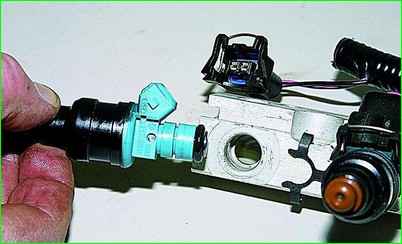
By shaking the injector, we take it out of the ramp.
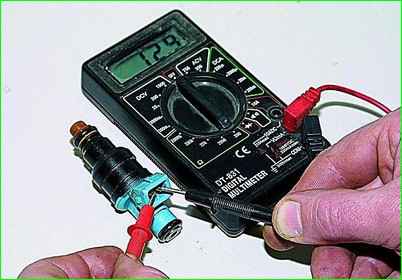
We check the resistance of the injector winding with a tester. The resistance should be within 11–15 Ohms.
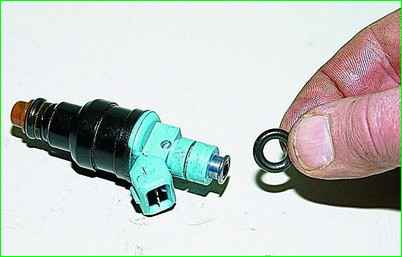
To replace the injector sealing rings, use a thin-bladed screwdriver to pry the sealing rings off the injector body and sprayer.
Remove the other injectors in the same way. We install the injectors on the fuel rail in the reverse order.
To check the injectors, we connect the block of their wiring harness to the block of the wiring harness of the engine management system, and the fuel hoses to the pipes of the fuel rail and pressure regulator.
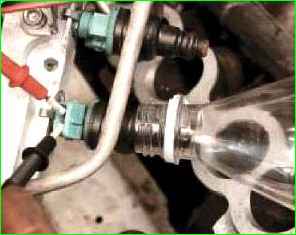
We install the fuse for the electric fuel pump in the block of the relay and fuse block of the engine management system.
Having placed transparent flasks (you can use plastic bottles), turn the engine crankshaft with a starter.
The shapes of the spray torches, as well as the amount of fuel injected by each injector over a certain period of time, should not differ significantly.
We check each injector separately by placing a transparent flask under it and disconnecting the wiring block from it.
We supply 12 V from the battery with two wires to the injector and turn on the ignition.
A characteristic stream should flow from the holes of the injector sprayer, forming a conical torch.
After disconnecting the power from the injector, we check if fuel is leaking through the holes of the sprayer.
If the electrical resistance of the injector does not meet the norm, the performance and spray torch differ greatly from the indicators of other injectors, or if If the injector is leaky, it must be replaced.





